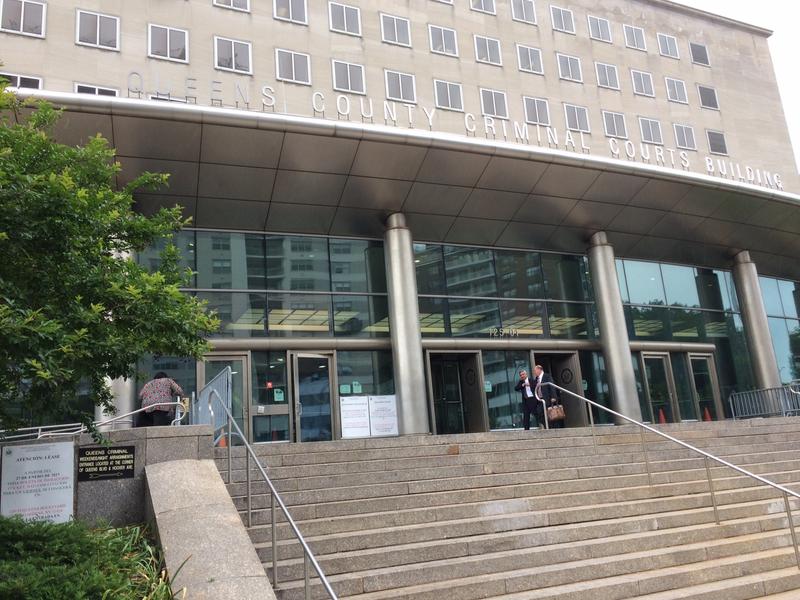
Throughout the year, immigrant advocates and public defenders have sounded the alarm that the growing presence of Immigration and Customs Enforcement (ICE) in and near courthouses would deter undocumented immigrants from coming to court. But that theory is hard to prove in the city's available data.
An executive order signed shortly after President Trump took office made all immigrants without legal status the priority for deportation. This also included immigrants merely charged with crimes but not yet convicted, a departure from the Obama era.
One way of finding immigrants charged with crimes is for ICE to show up at their court appearances (when someone is arrested, their fingerprints are shared with state and federal authorities and court dockets are public records). In New York City, ICE came to court at least 40 times this year, according to the Office of Court Administration. That's not counting appearances outside courthouses.
The Immigrant Defense Project conducted a survey over the summer, after WNYC reported that ICE agents were seen outside a courtroom for victims of human trafficking, and lawyers complained about ICE in and around other city courthouses.
Staff attorney Lee Wang said the project surveyed 225 advocates around the state. "What we found is that three out of four advocates reported having clients who expressed fear of going to court," she said.
But did they act on that fear?
One way to measure that is to see if more people are skipping their criminal court appearances, which results in a warrant. But the Office of Court Administration found no increase in the percentage of warrants ordered in New York City between January and the end of September. Between 7 and 10 percent of criminal court appearances in each of the five boroughs resulted in warrants, the same as in 2016.
Wang said that’s not surprising. For one thing, it’s not yet a full year and there’s no way to break down immigrants versus other defendants. Plus, not every court appearance is mandatory.
"Two thirds of attorneys who work with people who were affected by violence reported that they had clients who were unwilling to seek protection from the court," Want explained. "That means people who are unwilling to get orders of protection from the court."
Those people tend to be in abusive relationships; they're also survivors of domestic violence or human trafficking. Suzanne Tomatore has a lot of these clients as co-director of immigrant justice projects at the City Bar Justice Center.
"If their perpetrator is arrested and they're needed to testify in court, many of our clients are no longer comfortable going to court to testify," she stated.
WNYC also looked at family court statistics to see if fewer cases were filed for guardianship, family offense or custody — but again, there was no real difference since 2016. And Tomatore noted that this data does not include "no-shows" for hearings, meaning the person who is being served for an order of protection and is too afraid to go because of immigrant status.
Several public defenders said fear of ICE also causes undocumented immigrants to try to minimize their court appearances in criminal cases, by accepting plea agreements they might otherwise fight.
The group Brooklyn Defender Services said slightly more warrants were issued this year to its immigrant clients, proof that the fear of ICE is having an impact. The nonprofit keeps its own statistics and said it does not advise clients to skip court. It also agreed with others who said warrants don't tell the whole story.
Immigrant advocates have been asking New York State Chief Judge Janet DiFiore to prevent ICE from showing up in the courts. They also protested in Brooklyn. But while DiFiore has spoken with federal officials about these concerns, she's also stated that the courts are public buildings — unlike churches and hotels, which are considered sensitive locations off limits to ICE.
For its part, ICE claims it needs to find people in courts when the police and jails in "sanctuary cities" like New York aren’t willing to hold immigrants in their custody for an extra 48 hours so ICE can detain them.
